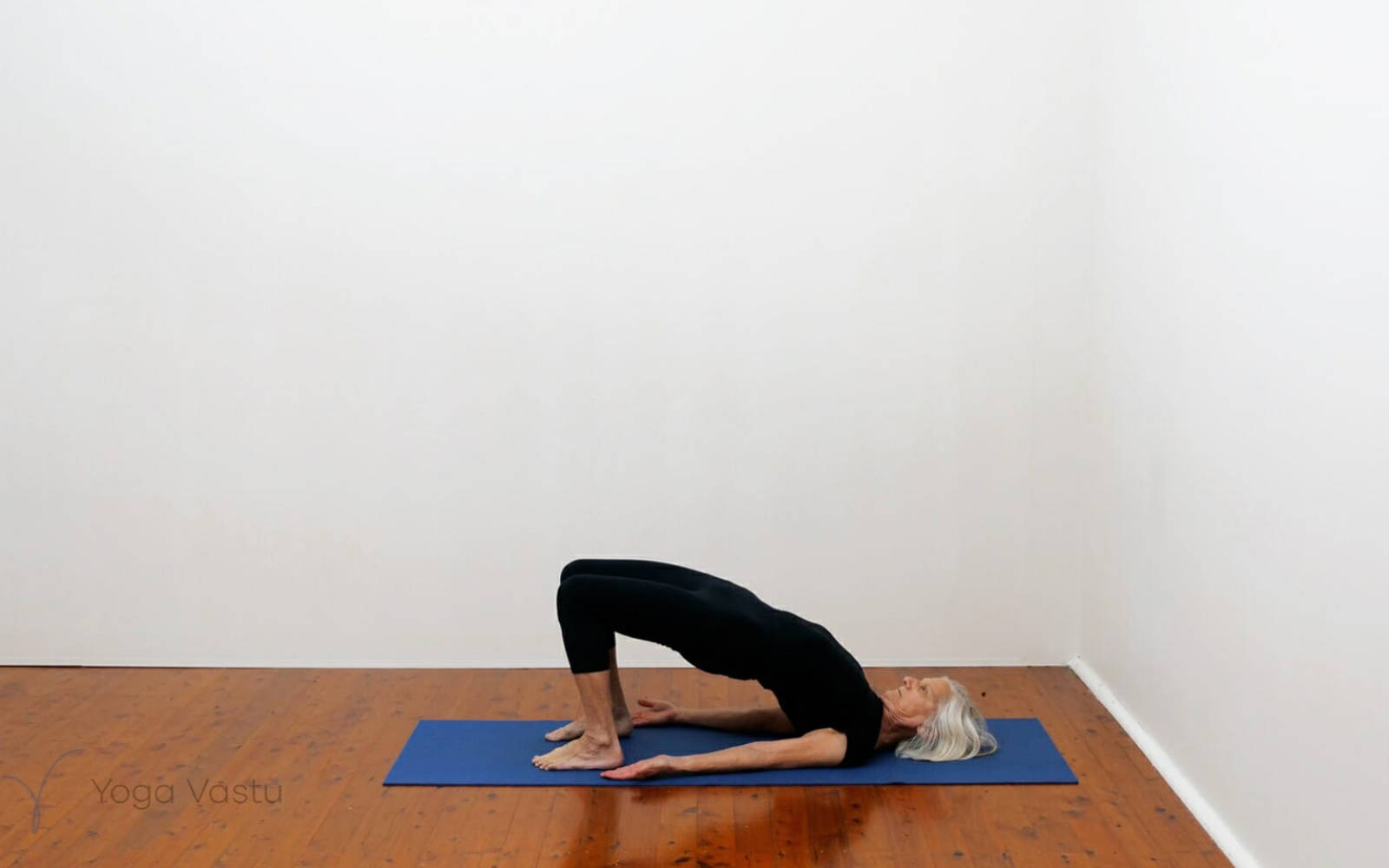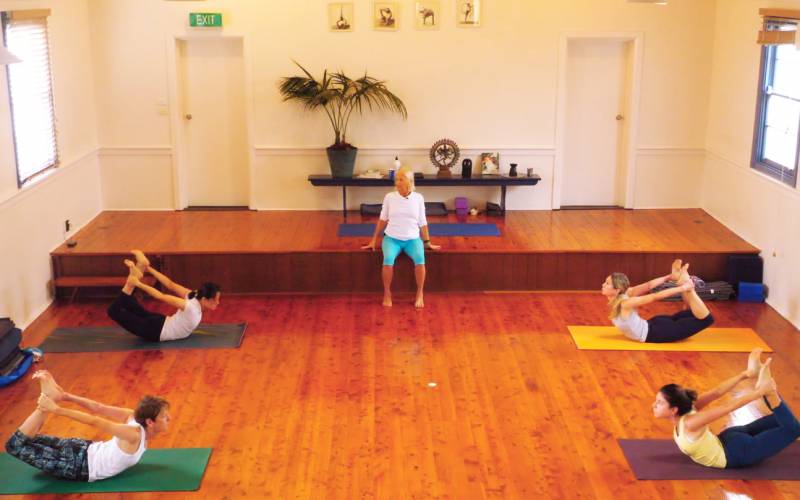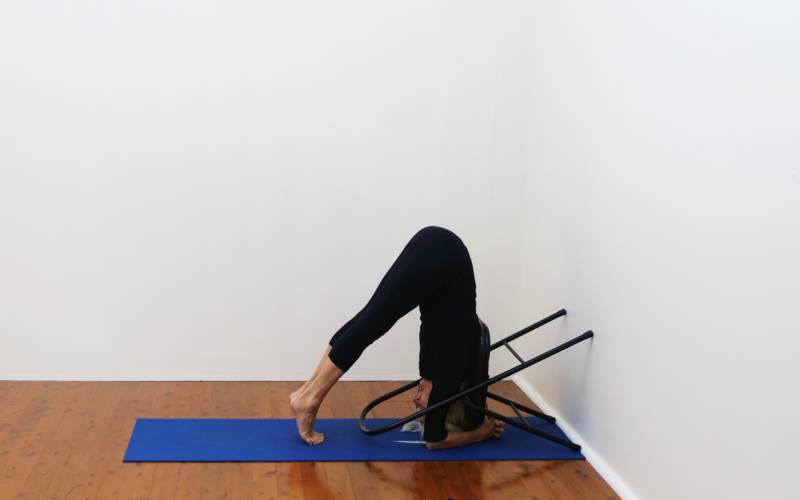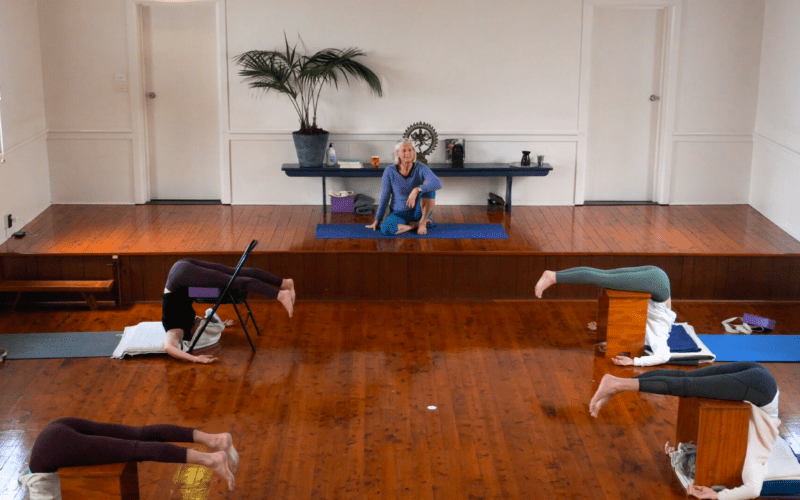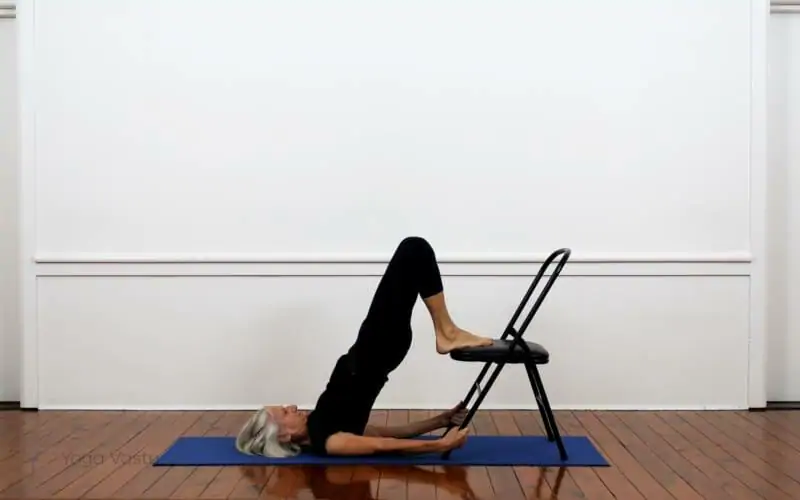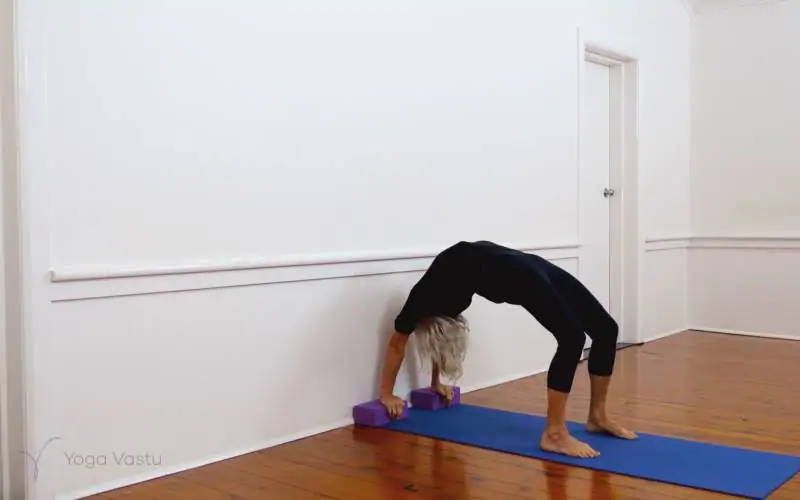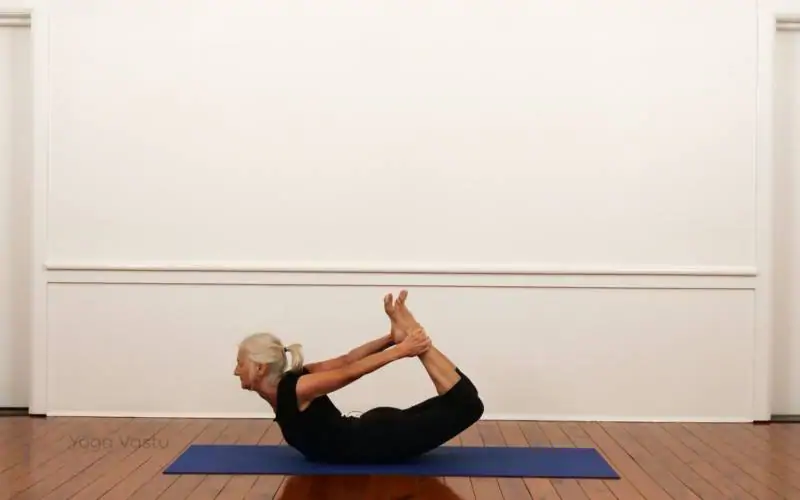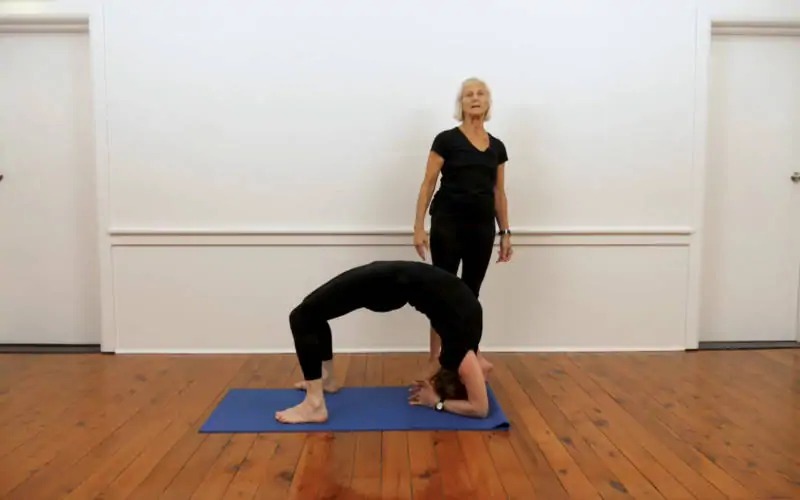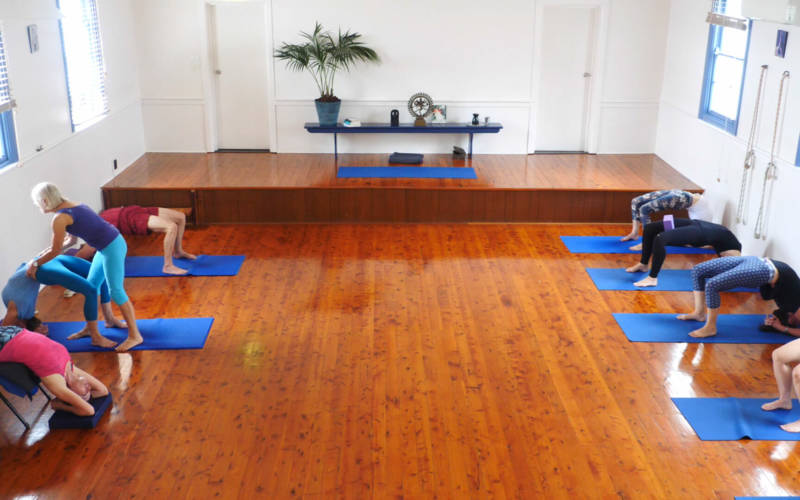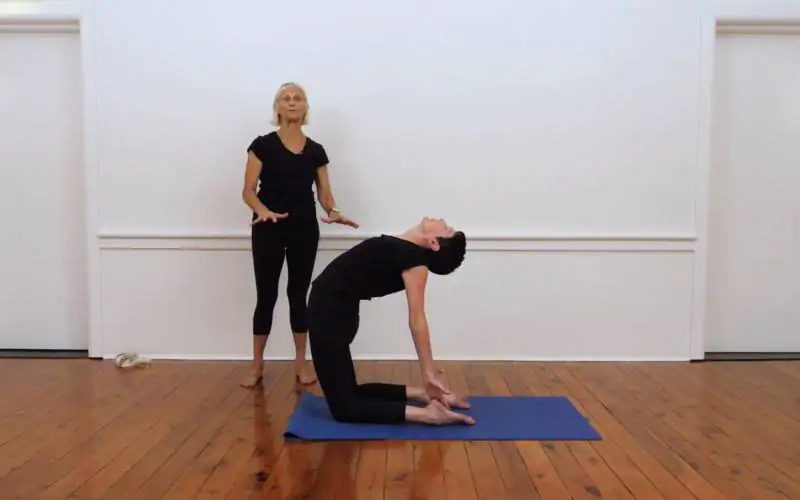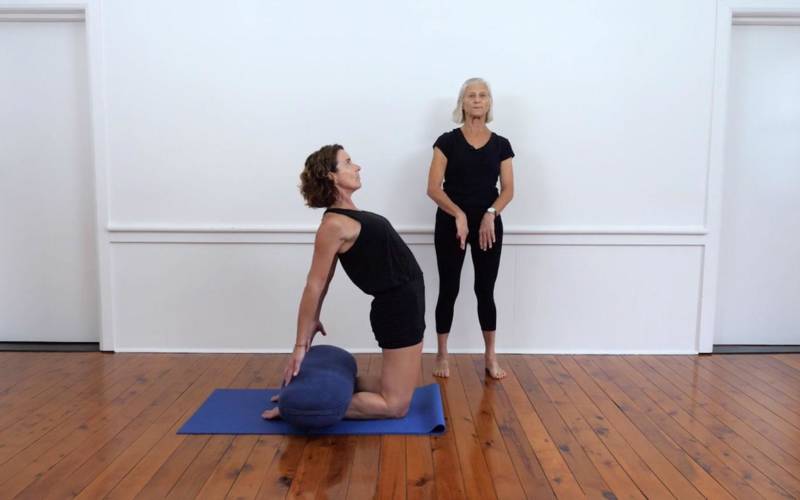How to perform Bridge Pose
Start by lying down. Press your shoulders into the floor, using them as leverage to lift your hips up to capacity. You can use your hands to support your back to help yourself to go into a deeper stretch. You can also place a block below your sacrum for support.
What is Setu Bandha Sarvangasana (Bridge Pose)?
Setu Bandha Sarvangasana, more commonly known as Bridge Pose, is very similar to Chatushpadasana. Both poses are used for strengthening the shoulder and upper back muscles as a way of preparing the practitioner for Salamba Sarvangasana (Shoulder Stand). It is a combination of a mild backbend and inversion, and it cultivates strength and flexibility in your whole back body as you resist the force of gravity. When practiced regularly it can help tone the hamstrings, glutes, back and abdominal muscles.
It is important to keep your shoulders rolled back onto the floor and maintain your hips in a neutral position, parallel to the floor. A block can be placed beneath your sacrum to offer additional support for your hips if you need to draw extra focus to opening up your chest and shoulder area. This slightly milder variation of Bridge Pose can come in handy when you’re low on energy. It can also be helpful in relieving menstrual cramps.
When to use Setu Bandha Sarvangasana (Bridge Pose)?
This pose is often used at the end of the practice since, despite being mildly strenuous, it is also known for its pronounced restorative effects, making it perfect for the cool-down. It allows your blood to flow back down to your extremities, thus evening out the energy balance in your body.
Practicing Bridge Pose can have many benefits both for the body and mind. Placing a block under your sacrum can enhance the calming effects of this pose, whereas practicing Setu Bandha Sarvangasana in its unsupported variation can help bring radiance and energy to your body, and tone the abdominal muscles and glutes.
